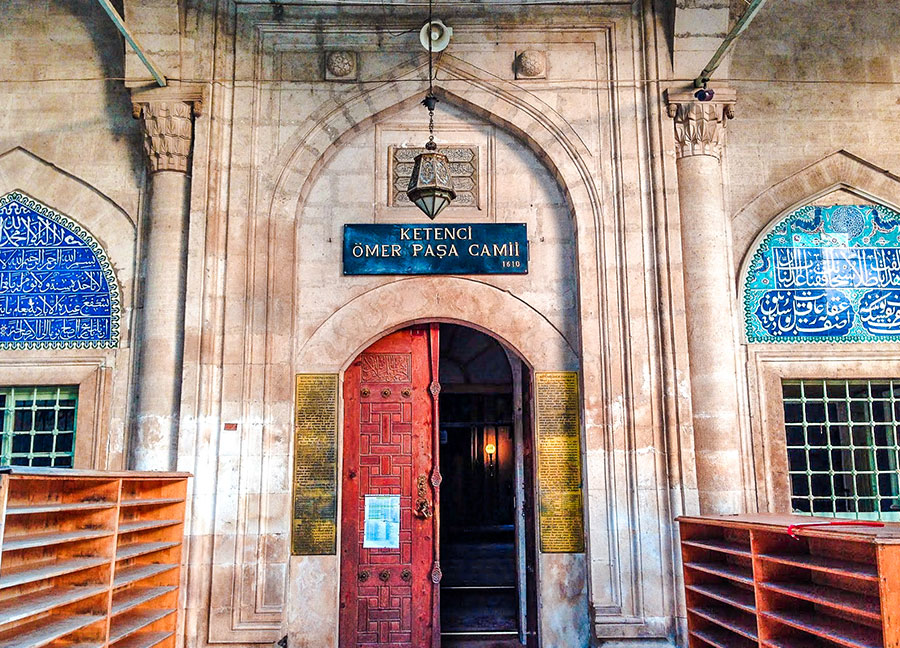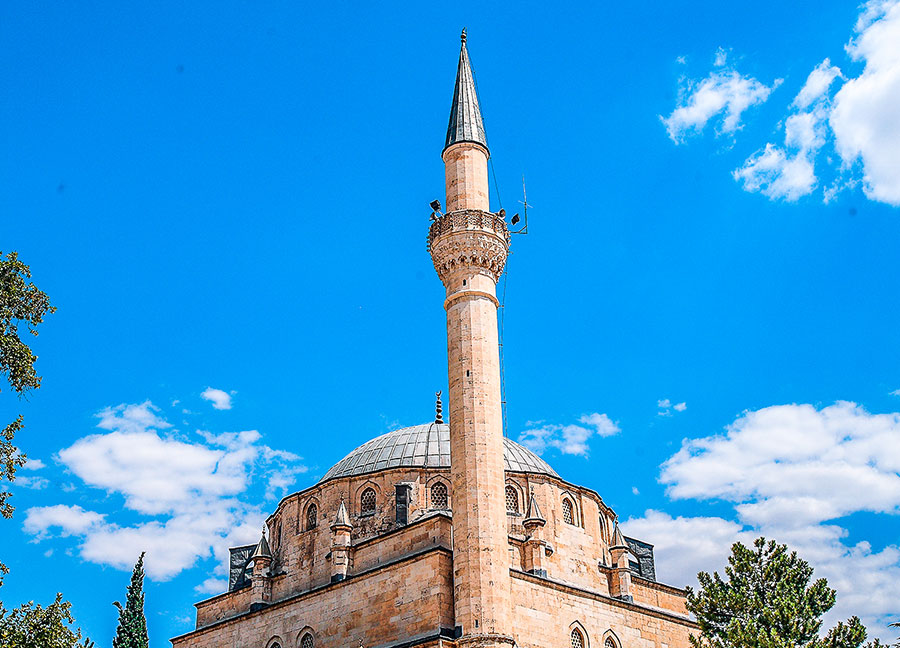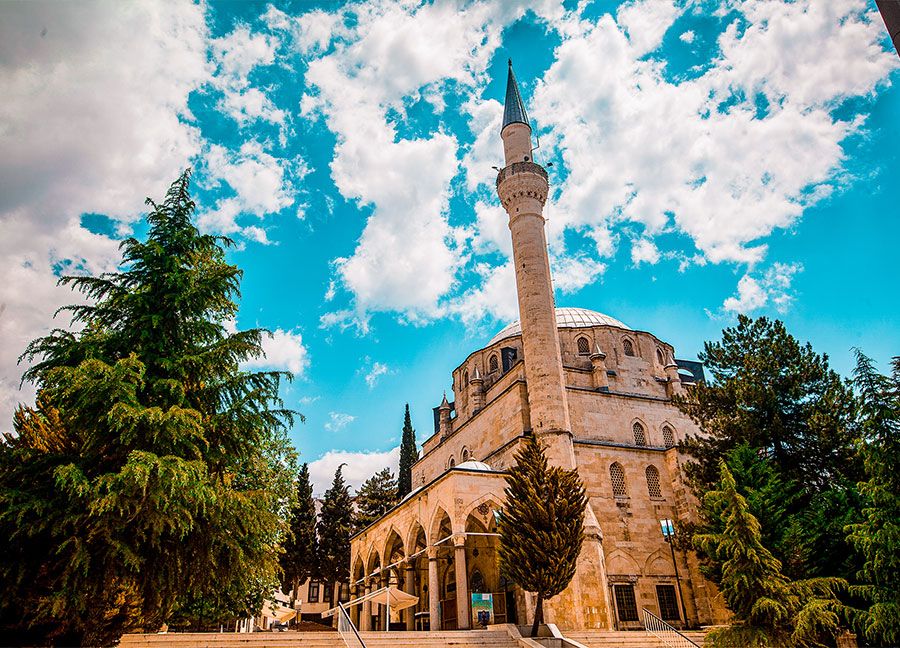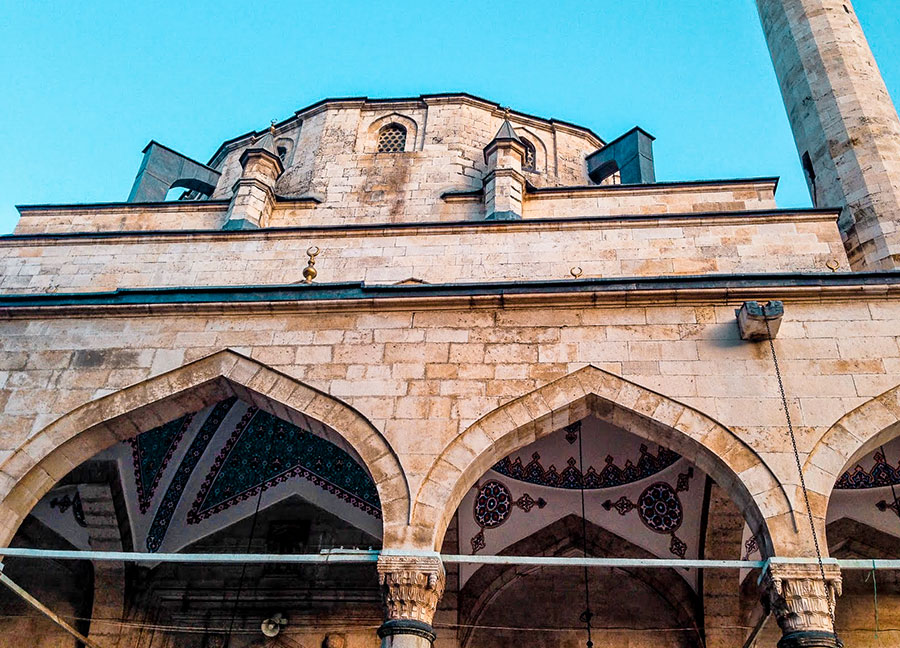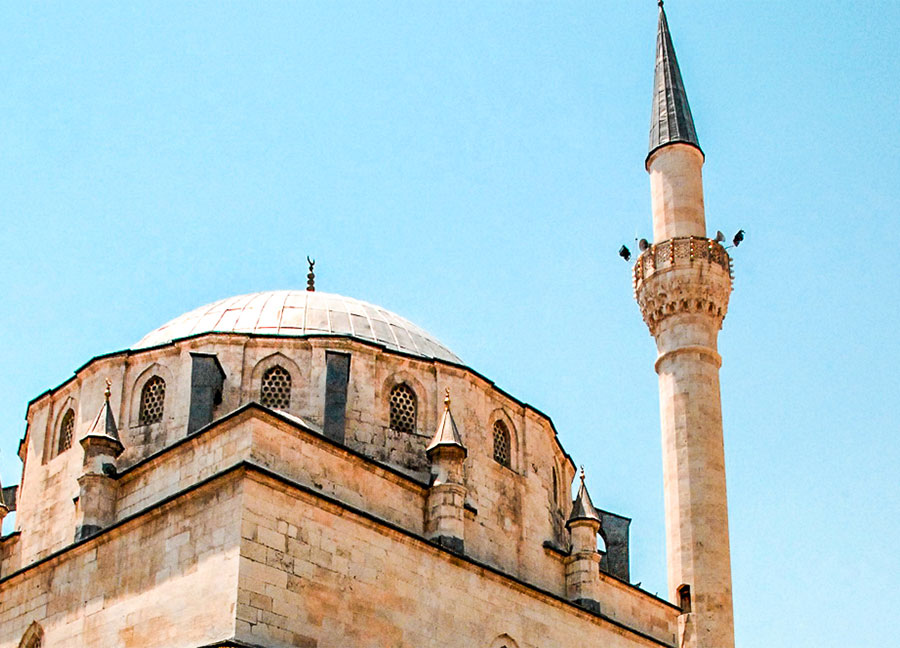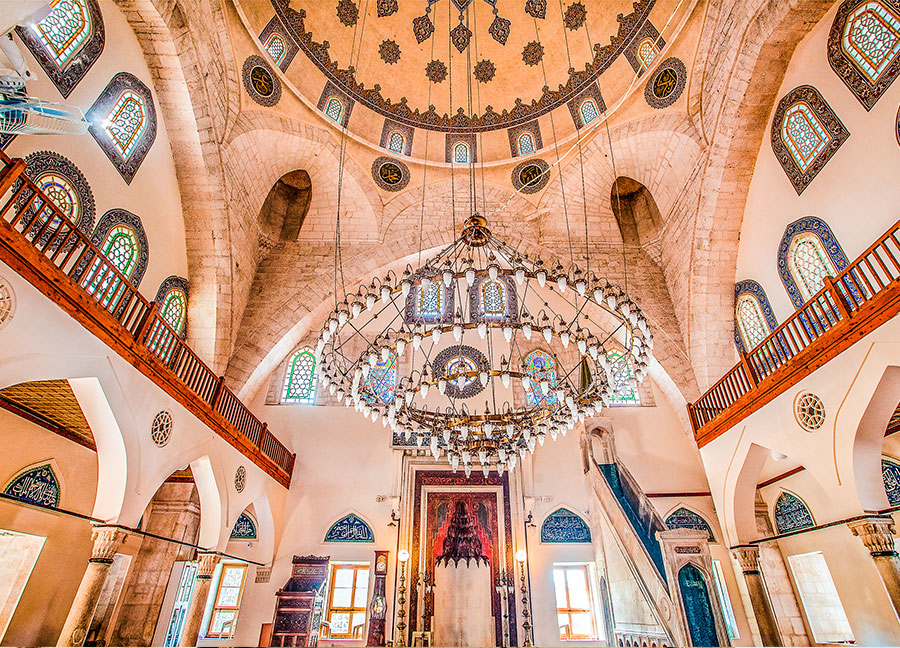Ömer Pasha Mosque is on Government Street in the Elmalı district of Antalya. Ketenci Ömer Pasha built it in 1610 during the Ottoman Period.
The mosque was built entirely of cut stone. It has a square plan and is covered with a single dome. There is a six-line inscription on the crown gate with a large pointed arch in the form of an arc. On the façades, there are four windows in two rows at the bottom and two at the top. The most remarkable feature of the windows is that the tiles with different verses on each of the pediments that adorn them from the inside and outside are considered the last works of Iznik tile ovens. The fact that unique examples of Iznik tile-making were brought to Elmalı by traveling long distances in the difficult conditions of the period is considered proof that great importance was attached to the construction and architecture of the mosque.
The mihrab and pulpit of the mosque are marble. Although the pulpit is not very ornate, the railing of the stairs is decorated with rosette reliefs. The interior and dome of the mosque are covered with hand-drawn embroidery. The minaret still preserves the appearance of the first day. The minaret has a polygonal body. It rises to the balcony and sits on stalactites, which are richly embroidered geometric ornaments and transitional forms.
The building is called the Ömer Pasha Complex, which the Ömer Pasha Mosque is. It consists of a mosque, and a madrasa placed opposite each other in a common courtyard with a fountain, and a separate bath, which is considered a part of the tomb and complex adjacent to the southeast of the mosque.
Ömer Pasha Mosque is shown among the largest and most magnificent works of Southwestern Anatolia. It is one of the few important examples built in Anatolia, one of the most advanced and distinguished examples of the centrally planned - single-domed type of Ottoman Period Turkish Architecture.


